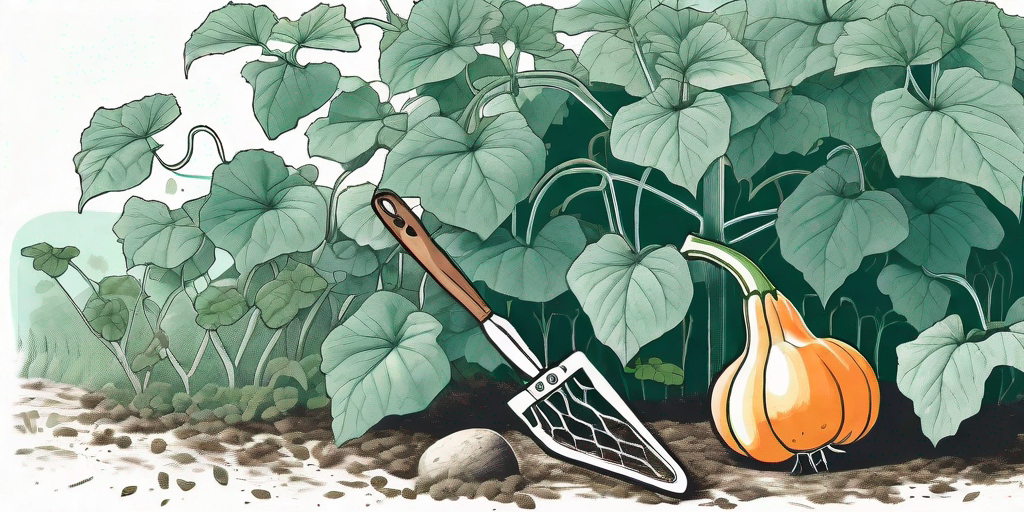
Ah, butternut squash! That sweet, nutty, and versatile vegetable that graces our tables in the form of soups, roasts, and even desserts. But the key to enjoying its full flavor potential lies in knowing when and how to harvest it. So, let's dive into the world of butternut squash and uncover the secrets to harvesting this delightful veggie at the perfect time.
The Life Cycle of Butternut Squash
From Seed to Sprout
Butternut squash begins its life as a humble seed, planted in the warm, welcoming soil of late spring. Within 7-10 days, the seed germinates and a sprout emerges, ready to soak up the sun and grow into a robust plant.
As the sprout matures, it develops into a vine with large, green leaves. This vine is a vigorous grower and will need plenty of space to spread out. So, if you're planning on growing butternut squash, make sure you've got ample room in your garden.
The Flowering Stage
After about a month, the plant starts to flower. These aren't just any flowers, mind you. They're bright yellow, trumpet-shaped beauties that are a sight to behold. But more importantly, they're a sign that your butternut squash is on its way.
These flowers are also a hot spot for pollinators. Bees, butterflies, and other beneficial insects will visit these flowers, helping to pollinate your plant and set the stage for the fruit to develop.
Fruit Development and Maturation
Once pollinated, the flowers will start to develop into fruit. This is where the magic happens. Over the next 2-3 months, your butternut squash will grow from a small, green fruit into a large, tan-colored squash.
During this time, it's important to keep an eye on your squash. Make sure it's getting enough water, but not too much. You don't want to drown the poor thing. And keep an eye out for pests. Squash bugs and vine borers are notorious for ruining a good squash harvest.
Harvesting Butternut Squash: The Perfect Time
Signs of Maturity
So, how do you know when it's time to harvest your butternut squash? Well, there are a few tell-tale signs. First, the skin of the squash will turn from green to a deep, tan color. Second, the skin will become hard and tough. If you try to pierce it with your fingernail, it should resist.
Another sign of maturity is the condition of the vine. As the squash matures, the vine will start to die back. When the vine is brown and dry, it's a good sign that your squash is ready to harvest.
The Harvesting Process
Harvesting butternut squash is a simple process. Using a sharp knife or pruners, cut the squash from the vine, leaving about an inch of stem attached. Be careful not to cut into the squash itself, as this can lead to rot.
Once harvested, the squash should be cured. This involves leaving it in a warm, dry place for about two weeks. This helps to harden the skin and improve the flavor of the squash.
Storing Butternut Squash
After curing, butternut squash can be stored for several months. The key is to keep it in a cool, dry place. A basement or cellar is ideal. Just make sure to check on your squash regularly to ensure it's not developing any signs of rot.
When you're ready to use your squash, simply cut it open, remove the seeds, and prepare it as desired. The sweet, nutty flavor is well worth the wait!
Frequently Asked Questions
- What if my butternut squash is green when it's time to harvest?
That's okay! Green butternut squash can still be harvested and eaten. It will just have a slightly different flavor and texture than mature, tan-colored squash. - Can I save the seeds from my butternut squash to plant next year?
Yes, you can! Just make sure to let the seeds dry out completely before storing them. And remember, seeds saved from hybrid varieties may not produce the same type of squash next year. - How can I tell if my stored butternut squash is going bad?
Signs of rot include soft spots, mold, and an off smell. If your squash shows any of these signs, it's best to compost it.
Conclusion
Harvesting butternut squash at the perfect time can seem like a bit of a guessing game, but with these tips and tricks, you'll be a pro in no time. So get out there, get your hands dirty, and get ready to savor the sweetness of perfectly harvested butternut squash. Happy gardening!











